 DEDICATIONTo Glenn Payne: I wouldnt be where I am today without your friendship and patronage; I miss you terribly.To Joshua Arnold: as I finish this book its your 18th birthday. Youre a remarkableyoung man already; I cant wait to see what you do with your life and I hope youll always have time for a pint with your Auntie Minibus.
DEDICATIONTo Glenn Payne: I wouldnt be where I am today without your friendship and patronage; I miss you terribly.To Joshua Arnold: as I finish this book its your 18th birthday. Youre a remarkableyoung man already; I cant wait to see what you do with your life and I hope youll always have time for a pint with your Auntie Minibus.
CONTENTS
 By John Keeling, Director of Brewing, Fullers BreweryThe world of beer now values flavour above all considerations and this is why youhave chosen the right book, as Melissa is an expert in flavour which is also whyI have invited her twice to brew beers with me.Now, you might wonder why does a brewer need to collaborate with a writer to makea beer? Firstly, its because Melissa is a person of many opinions and I value thoseopinions, both as a friend and in my role as brewing director of Fuller, Smith &Turner; I don't always agree with her but that is quite natural because nobody hasexactly the same taste.But mostly its because of her innate understanding of flavour and which ones worktogether, and how, that makes her insights invaluable, especially in modern brewing,where so many nontraditional ingredients are used. It is very useful indeed to havesomeone like Melissa around because between her palate, experience of cooking andjudging beer competitions the world over, her knowledge is as broad as it is deep.In these pages Im proud that youll find mention of both Fullers Imperial Stoutand Vintage Ale (see ). The inspiration for Vintage originally camefrom the Fullers marketing team, which proves that inspiration can come from unusualplaces! However, as all good stories should start, one day in the pub Melissa raisedthe idea of wanting to brew a Turkish delight beer, and it was just so crazy thatwe had to brew it (it does help that wed had a few beers to lubricate the thoughtprocess too!).But collaborations are just a small part of the value Melissa gives to brewers andbeer enthusiasts; I always find the discussions about beer that we have over a pintare not only enlightening, but also inspire me to make better beer.So, I hope you find this book enlightening too and, most importantly, I hope it inspiresyou to explore beer more, by trying some of the food recipes and beer matches becauseyou have chosen an excellent guide.I want to be very upfront with you here, because well, the intro seems the logicalplace to do this. This is not a book for beer nerds.Dont get me wrong: I would love for established beer lovers to have this book ontheir shelf, but its not designed to teach them much more than they already know.This is a book for people who want to begin their journey in beer. Its a starterto make everyone who picks it up thirsty, inquisitive and slightly better informed,but not so overwhelmed with technical jargon that it sends them running in the oppositedirection!Sure, there is a bit of techy, geeky stuff, but what are books like this for otherthan to provide you with some info to show off to friends and win pub quizzes with?There are also lots of breweries that Id love to have in here and whose omissionis bound to cause grumbling, many ofthem darlings of the cognoscenti.
By John Keeling, Director of Brewing, Fullers BreweryThe world of beer now values flavour above all considerations and this is why youhave chosen the right book, as Melissa is an expert in flavour which is also whyI have invited her twice to brew beers with me.Now, you might wonder why does a brewer need to collaborate with a writer to makea beer? Firstly, its because Melissa is a person of many opinions and I value thoseopinions, both as a friend and in my role as brewing director of Fuller, Smith &Turner; I don't always agree with her but that is quite natural because nobody hasexactly the same taste.But mostly its because of her innate understanding of flavour and which ones worktogether, and how, that makes her insights invaluable, especially in modern brewing,where so many nontraditional ingredients are used. It is very useful indeed to havesomeone like Melissa around because between her palate, experience of cooking andjudging beer competitions the world over, her knowledge is as broad as it is deep.In these pages Im proud that youll find mention of both Fullers Imperial Stoutand Vintage Ale (see ). The inspiration for Vintage originally camefrom the Fullers marketing team, which proves that inspiration can come from unusualplaces! However, as all good stories should start, one day in the pub Melissa raisedthe idea of wanting to brew a Turkish delight beer, and it was just so crazy thatwe had to brew it (it does help that wed had a few beers to lubricate the thoughtprocess too!).But collaborations are just a small part of the value Melissa gives to brewers andbeer enthusiasts; I always find the discussions about beer that we have over a pintare not only enlightening, but also inspire me to make better beer.So, I hope you find this book enlightening too and, most importantly, I hope it inspiresyou to explore beer more, by trying some of the food recipes and beer matches becauseyou have chosen an excellent guide.I want to be very upfront with you here, because well, the intro seems the logicalplace to do this. This is not a book for beer nerds.Dont get me wrong: I would love for established beer lovers to have this book ontheir shelf, but its not designed to teach them much more than they already know.This is a book for people who want to begin their journey in beer. Its a starterto make everyone who picks it up thirsty, inquisitive and slightly better informed,but not so overwhelmed with technical jargon that it sends them running in the oppositedirection!Sure, there is a bit of techy, geeky stuff, but what are books like this for otherthan to provide you with some info to show off to friends and win pub quizzes with?There are also lots of breweries that Id love to have in here and whose omissionis bound to cause grumbling, many ofthem darlings of the cognoscenti.
But the wayinnovation in the beer world has gone means that some fabulous breweries rarely,if ever in the case of some of those mentioned, repeat their beers.This makes it impossible to write an accessible book, send it for editing, then toprint, and then six months later have anyone find the beer Im talking about! Itsnot that I dont love what these yeast-wrangling maniacs are doing, I do, its justthey live in a different and rarefied atmosphere from the one Im sharing here.All I hoped to do was create a great gateway guide, something that includes beersthat you may have to seek out and ones that you will increasingly see on the shelvesof your local stores as they catch on to the global zeitgeist that is craft beer.Beyond the drinking side, Im also a passionate advocate of beer and food pairingand cooking with beer, which Ive been doing seriously for about eight years now.My philosophy about cooking with beer is that I dont use a beer just because; ithas to lend something to the dish. It has to earn its keep.  I dont subscribe to just using beer because your recipe needs a liquid. I wouldrather drink it and appreciate it than dump it in a pot for no good reason, whichis why each section has its own specific, simple recipe.Ive also, just for fun, included a cocktail for most sections, which can be a greatway of getting friends into beer who might not necessarily try it, or to use a secondbottle of beer that you didnt really care for by itself, or just because youvehad a crappy day at the office and feel like dancing around in your pyjamas withsomething a bit fancy.All of these are perfectly valid reasons to gussy up your brew. So whether, asaresult of reading this book, you just try a different lager, hoover more hops thanyou ever have done before, single out the sours or just embrace your dark side, Illbe thrilled. Oh, and be sure to come and find me on to let me know howyour journey is going. No, Im not sure what really is or isnt craft beer.
I dont subscribe to just using beer because your recipe needs a liquid. I wouldrather drink it and appreciate it than dump it in a pot for no good reason, whichis why each section has its own specific, simple recipe.Ive also, just for fun, included a cocktail for most sections, which can be a greatway of getting friends into beer who might not necessarily try it, or to use a secondbottle of beer that you didnt really care for by itself, or just because youvehad a crappy day at the office and feel like dancing around in your pyjamas withsomething a bit fancy.All of these are perfectly valid reasons to gussy up your brew. So whether, asaresult of reading this book, you just try a different lager, hoover more hops thanyou ever have done before, single out the sours or just embrace your dark side, Illbe thrilled. Oh, and be sure to come and find me on to let me know howyour journey is going. No, Im not sure what really is or isnt craft beer.
All Im going to say is thatafter 12 years of writing about beer, 10 years of judging it internationally and9 years of occasional brewing, Id like to think I know a quality brew when I tasteit, regardless of ownership, and I would never, ever mislead others into trying somethingI didnt personally rate. I take beer very seriously, so you dont have to (plusI have that being raised a Catholic guilt thing too!) The soul of any beer is its raw ingredients and every single one has a vital partto play.In todays hop-obsessed beer market, you could be forgiven for thinking that nothingelse matters, but just as its often the unsung ingredient, like perfect seasoning,that makes all the difference to a fantastic plate of food, so it is with beers.Brews that are carefully constructed for all the ingredients to work in harmony areoften the best; its a bit like a great band: just because one member will occasionallystep forward for a solo doesnt mean the rest of the band isnt still there backingthem up! GRAINS The structure on which every beer stands is its malt base, but what is malt exactly?To put it really simply, its a grain, normally barley, thats been fooled into thinkingits springtime to start germination, and then stopped in its tracks by a carefuldrying and toasting process.The level to which you toast the grains in the malting process gives you not onlylots of accessible starches and active enzymes in the grains the latter of whichwill convert the starches into sugars for the yeast to munch on and produce alcohol but also accounts for colour and flavour in your beer.
GRAINS The structure on which every beer stands is its malt base, but what is malt exactly?To put it really simply, its a grain, normally barley, thats been fooled into thinkingits springtime to start germination, and then stopped in its tracks by a carefuldrying and toasting process.The level to which you toast the grains in the malting process gives you not onlylots of accessible starches and active enzymes in the grains the latter of whichwill convert the starches into sugars for the yeast to munch on and produce alcohol but also accounts for colour and flavour in your beer.

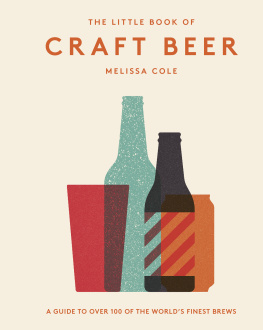
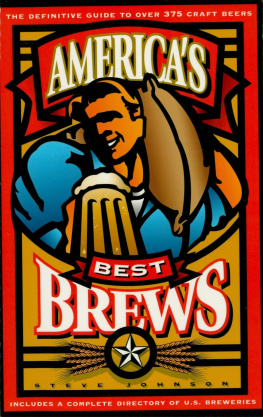

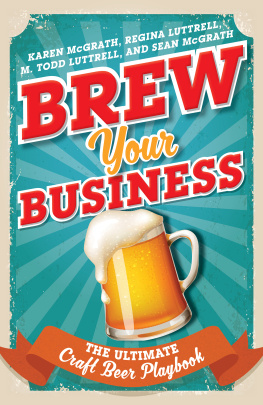
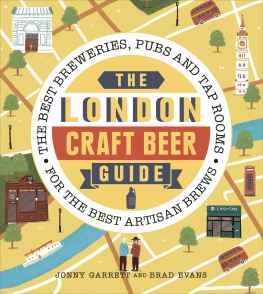
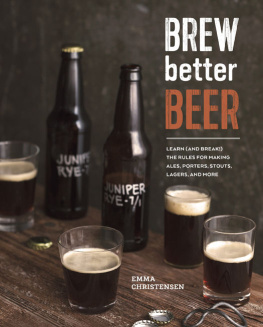
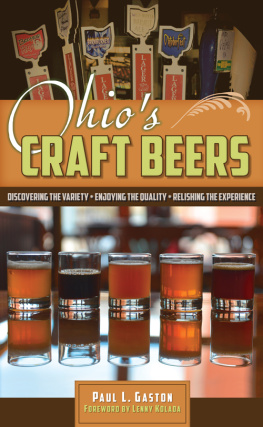
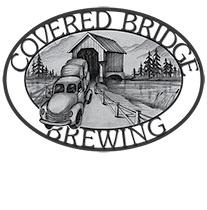
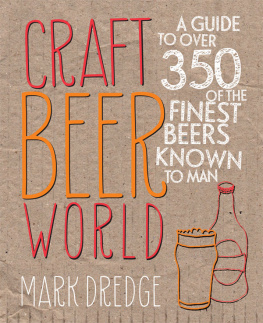
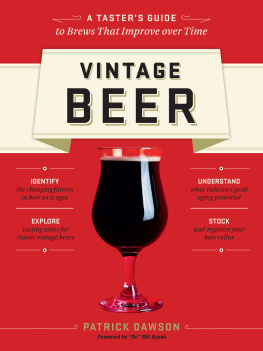
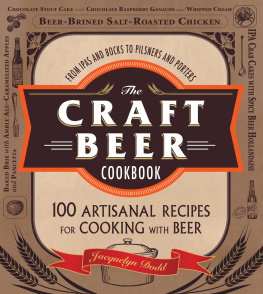
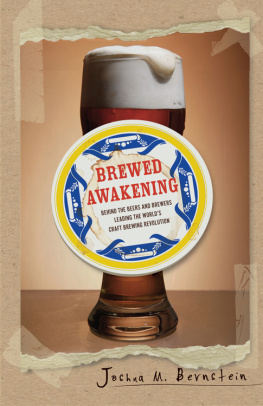


 DEDICATIONTo Glenn Payne: I wouldnt be where I am today without your friendship and patronage; I miss you terribly.To Joshua Arnold: as I finish this book its your 18th birthday. Youre a remarkableyoung man already; I cant wait to see what you do with your life and I hope youll always have time for a pint with your Auntie Minibus.
DEDICATIONTo Glenn Payne: I wouldnt be where I am today without your friendship and patronage; I miss you terribly.To Joshua Arnold: as I finish this book its your 18th birthday. Youre a remarkableyoung man already; I cant wait to see what you do with your life and I hope youll always have time for a pint with your Auntie Minibus. CONTENTS
CONTENTS  By John Keeling, Director of Brewing, Fullers BreweryThe world of beer now values flavour above all considerations and this is why youhave chosen the right book, as Melissa is an expert in flavour which is also whyI have invited her twice to brew beers with me.Now, you might wonder why does a brewer need to collaborate with a writer to makea beer? Firstly, its because Melissa is a person of many opinions and I value thoseopinions, both as a friend and in my role as brewing director of Fuller, Smith &Turner; I don't always agree with her but that is quite natural because nobody hasexactly the same taste.But mostly its because of her innate understanding of flavour and which ones worktogether, and how, that makes her insights invaluable, especially in modern brewing,where so many nontraditional ingredients are used. It is very useful indeed to havesomeone like Melissa around because between her palate, experience of cooking andjudging beer competitions the world over, her knowledge is as broad as it is deep.In these pages Im proud that youll find mention of both Fullers Imperial Stoutand Vintage Ale (see ). The inspiration for Vintage originally camefrom the Fullers marketing team, which proves that inspiration can come from unusualplaces! However, as all good stories should start, one day in the pub Melissa raisedthe idea of wanting to brew a Turkish delight beer, and it was just so crazy thatwe had to brew it (it does help that wed had a few beers to lubricate the thoughtprocess too!).But collaborations are just a small part of the value Melissa gives to brewers andbeer enthusiasts; I always find the discussions about beer that we have over a pintare not only enlightening, but also inspire me to make better beer.So, I hope you find this book enlightening too and, most importantly, I hope it inspiresyou to explore beer more, by trying some of the food recipes and beer matches becauseyou have chosen an excellent guide.I want to be very upfront with you here, because well, the intro seems the logicalplace to do this. This is not a book for beer nerds.Dont get me wrong: I would love for established beer lovers to have this book ontheir shelf, but its not designed to teach them much more than they already know.This is a book for people who want to begin their journey in beer. Its a starterto make everyone who picks it up thirsty, inquisitive and slightly better informed,but not so overwhelmed with technical jargon that it sends them running in the oppositedirection!Sure, there is a bit of techy, geeky stuff, but what are books like this for otherthan to provide you with some info to show off to friends and win pub quizzes with?There are also lots of breweries that Id love to have in here and whose omissionis bound to cause grumbling, many ofthem darlings of the cognoscenti.
By John Keeling, Director of Brewing, Fullers BreweryThe world of beer now values flavour above all considerations and this is why youhave chosen the right book, as Melissa is an expert in flavour which is also whyI have invited her twice to brew beers with me.Now, you might wonder why does a brewer need to collaborate with a writer to makea beer? Firstly, its because Melissa is a person of many opinions and I value thoseopinions, both as a friend and in my role as brewing director of Fuller, Smith &Turner; I don't always agree with her but that is quite natural because nobody hasexactly the same taste.But mostly its because of her innate understanding of flavour and which ones worktogether, and how, that makes her insights invaluable, especially in modern brewing,where so many nontraditional ingredients are used. It is very useful indeed to havesomeone like Melissa around because between her palate, experience of cooking andjudging beer competitions the world over, her knowledge is as broad as it is deep.In these pages Im proud that youll find mention of both Fullers Imperial Stoutand Vintage Ale (see ). The inspiration for Vintage originally camefrom the Fullers marketing team, which proves that inspiration can come from unusualplaces! However, as all good stories should start, one day in the pub Melissa raisedthe idea of wanting to brew a Turkish delight beer, and it was just so crazy thatwe had to brew it (it does help that wed had a few beers to lubricate the thoughtprocess too!).But collaborations are just a small part of the value Melissa gives to brewers andbeer enthusiasts; I always find the discussions about beer that we have over a pintare not only enlightening, but also inspire me to make better beer.So, I hope you find this book enlightening too and, most importantly, I hope it inspiresyou to explore beer more, by trying some of the food recipes and beer matches becauseyou have chosen an excellent guide.I want to be very upfront with you here, because well, the intro seems the logicalplace to do this. This is not a book for beer nerds.Dont get me wrong: I would love for established beer lovers to have this book ontheir shelf, but its not designed to teach them much more than they already know.This is a book for people who want to begin their journey in beer. Its a starterto make everyone who picks it up thirsty, inquisitive and slightly better informed,but not so overwhelmed with technical jargon that it sends them running in the oppositedirection!Sure, there is a bit of techy, geeky stuff, but what are books like this for otherthan to provide you with some info to show off to friends and win pub quizzes with?There are also lots of breweries that Id love to have in here and whose omissionis bound to cause grumbling, many ofthem darlings of the cognoscenti. I dont subscribe to just using beer because your recipe needs a liquid. I wouldrather drink it and appreciate it than dump it in a pot for no good reason, whichis why each section has its own specific, simple recipe.Ive also, just for fun, included a cocktail for most sections, which can be a greatway of getting friends into beer who might not necessarily try it, or to use a secondbottle of beer that you didnt really care for by itself, or just because youvehad a crappy day at the office and feel like dancing around in your pyjamas withsomething a bit fancy.All of these are perfectly valid reasons to gussy up your brew. So whether, asaresult of reading this book, you just try a different lager, hoover more hops thanyou ever have done before, single out the sours or just embrace your dark side, Illbe thrilled. Oh, and be sure to come and find me on to let me know howyour journey is going. No, Im not sure what really is or isnt craft beer.
I dont subscribe to just using beer because your recipe needs a liquid. I wouldrather drink it and appreciate it than dump it in a pot for no good reason, whichis why each section has its own specific, simple recipe.Ive also, just for fun, included a cocktail for most sections, which can be a greatway of getting friends into beer who might not necessarily try it, or to use a secondbottle of beer that you didnt really care for by itself, or just because youvehad a crappy day at the office and feel like dancing around in your pyjamas withsomething a bit fancy.All of these are perfectly valid reasons to gussy up your brew. So whether, asaresult of reading this book, you just try a different lager, hoover more hops thanyou ever have done before, single out the sours or just embrace your dark side, Illbe thrilled. Oh, and be sure to come and find me on to let me know howyour journey is going. No, Im not sure what really is or isnt craft beer. GRAINS The structure on which every beer stands is its malt base, but what is malt exactly?To put it really simply, its a grain, normally barley, thats been fooled into thinkingits springtime to start germination, and then stopped in its tracks by a carefuldrying and toasting process.The level to which you toast the grains in the malting process gives you not onlylots of accessible starches and active enzymes in the grains the latter of whichwill convert the starches into sugars for the yeast to munch on and produce alcohol but also accounts for colour and flavour in your beer.
GRAINS The structure on which every beer stands is its malt base, but what is malt exactly?To put it really simply, its a grain, normally barley, thats been fooled into thinkingits springtime to start germination, and then stopped in its tracks by a carefuldrying and toasting process.The level to which you toast the grains in the malting process gives you not onlylots of accessible starches and active enzymes in the grains the latter of whichwill convert the starches into sugars for the yeast to munch on and produce alcohol but also accounts for colour and flavour in your beer.